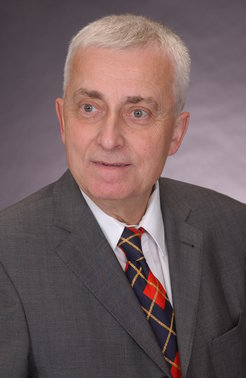In memory of Peter Toschek
A pioneer in quantum physics and laser spectroscopy

Peter Toschek was the first to succeed in photographing individual trapped ions in Paul traps and to demonstrate the laser cooling of such ions. While researching the physics of cold trapped ions, he discovered surprising quantum leaps early on. Furthermore, he explored the Quantum Zeno effect with profound studies. In experiments on laser cooling of ion chains, it was he who observed quantized collective oscillation modes first. Such oscillation modes allow the realization of quantum gates for scalable quantum computers, as recognized by Ignacio Cirac and Peter Zoller in 1994. Through their work, Peter Toschek and his team in Hamburg have laid the foundations for many aspects of quantum technology which are of great importance today.
Peter Toschek studied physics at the University of Göttingen and at the University of Bonn, where he received his doctoral degree under Wolfgang Paul in 1961. Seven years later, in 1968, he was habilitated in Heidelberg and was appointed professor there in 1972. During his time as a research assistant in the department of applied physics at the University of Heidelberg, he founded the first German research group for laser spectroscopy in 1963.
One member of this research group in Heidelberg was Theodor Hänsch, first in the context of his diploma thesis and later while working on his dissertation, which he completed in 1969 under Peter Toschek. Together they worked on the basics of doppler-free laser spectroscopy. For Professor Hänsch, his diploma thesis was a formative period in which he was given the opportunity to work with lasers in spectroscopy for the first time - during a time when a laser had to be built from scratch. Peter Toschek made very high scientific demands on himself as well as on others, so he had an enormous amount of knowledge long before Google or Wikipedia existed.
In 1981, Peter Toschek was appointed professor at the Department of Physics at the University of Hamburg, where he was working until his retirement in 1998. Together with Günter Huber he founded the Institute for Laser Physics in 1989/1991.
In 1990, Peter Toschek received the Robert Wichard Pohl Prize of the German Physical Society (DPG). Twenty-five years later, in 2015, he was awarded the Herbert-Walther-Prize by the DPG and the Optical Society of America (OSA) for his "pioneering work in the fields of laser cooling and storage of single ions as well as his fundamental contributions to the principles of laser spectroscopy and atomic physics".
Nobel laureate Theodor Hänsch mourns: "With Peter Toschek we have lost an admirable scholar and researcher as well as an incomparable person."
With the following video, we want to commemorate Peter Toschek.
(MK)













